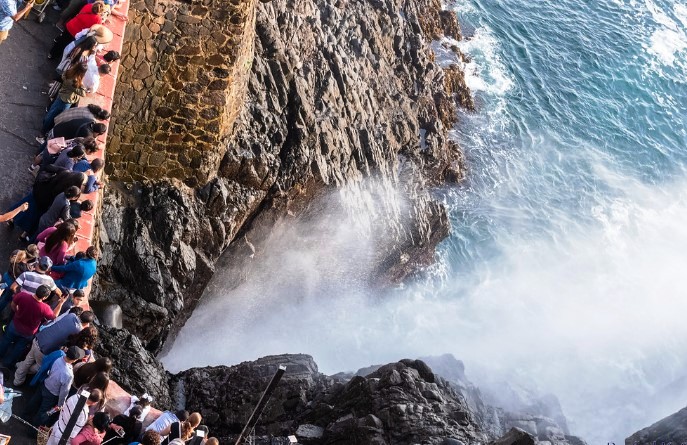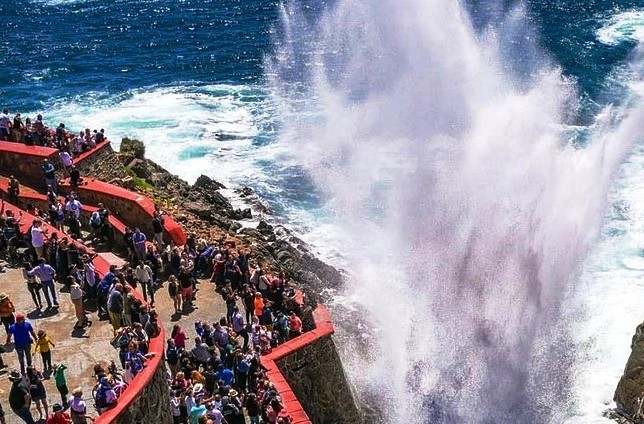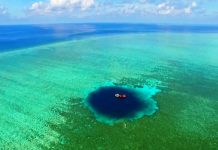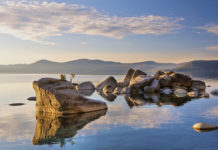There is a blowhole and tourist attraction called La Bufadora on the Punta Banda Peninsula in Baja California, Mexico. It is located approximately 17 miles south of Ensenada. There is only one blowhole in North America, La Bufadora, which is the second-largest in the world. However, many consider La Bufadora a marine geyser; it does not originate from a thermal source. The spout of seawater is caused by trapped air exploding upwards in a sea cave. Wave action forces air into the cave, releasing water up to 100 feet above sea level when the water recedes. The spouts, as well as the thunderous sound, are created by this interaction.
There is a fairly constant interval between eruptions, and the swell dominates. It is evident from this that La Bufadora’s activity is determined by surface ocean waves. There was a recurrence between eruptions of 13 seconds and 17 seconds between 2005 and 2011. According to legend, a whale became trapped in the rocky point of La Bufadora and blew water to attract its pod. Eventually, the whale turned to stone, remained there forever, and was never freed.
There are several souvenir and food stalls overlooking La Bufadora, which is one of Ensenada’s most popular tourist attractions. This place is home to 150 businesses in 2017. This is considered to be the second largest marine geyser in the world after Makapuu Point in Oahu, Hawaii). Expect to get wet as ocean waves crash into the cliff as regularly as you would imagine.











